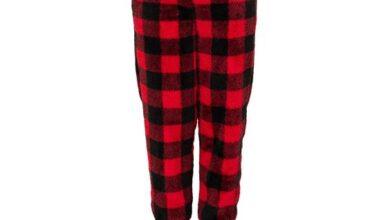Exploring VT1000 Pitting: A Visual Guide

The VT1000 series, renowned for its overall performance and sturdiness, has made good sized contributions in diverse industries, such as manufacturing, automotive, and aerospace. However, like any technological wonder, it isn’t proof against wear and tear, and one common problem that arises is pitting. This article targets to delve into the phenomenon of pitting, providing photo examples, discussing its reasons, implications, and capacity answers.
What is Pitting?
Pitting is a shape of localized corrosion that results in the formation of small pits or cavities on a surface. In the context of the VT1000, pitting commonly happens on steel components, affecting both aesthetic and purposeful components. It regularly arises due to environmental elements, mechanical wear, or wrong renovation, making it critical for operators to understand and address it promptly.
Types of Pitting
Pitting can range in severity and appearance, generally categorised into categories:
- Corrosion Pitting: Caused through electrochemical reactions, this type of pitting is often discovered in environments with excessive humidity or publicity to corrosive substances.
- Mechanical Pitting: Often a result of friction or wear, mechanical pitting takes place due to repeated contact or pressure at the surface, leading to fabric degradation.
Causes of Pitting in VT1000
Understanding the root causes of pitting in VT1000 components can resource in prevention and mitigation. The following are not unusual elements contributing to this difficulty:
1. Environmental Factors
- Moisture: High humidity and publicity to water can accelerate corrosion processes, mainly in metals like aluminum and metallic.
- Chemical Exposure: Contact with acids, salts, or different corrosive chemical compounds can provoke pitting.
2. Mechanical Stress
- Friction: Repeated touch among moving elements can result in mechanical wear, growing pitting.
- Improper Loading: Overloading components beyond their designed capability can exacerbate put on and contribute to pitting.
3. Material Quality
- Alloy Composition: The inherent residences of the cloth can impact its susceptibility to pitting. Poor-first-rate alloys can also pit more without problems than those designed for durability.
Visual Examples of Pitting
Example 1: Corrosion Pitting on a VT1000 Component
In this photo, we see wonderful small pits at the floor of a VT1000 factor. The floor seems stupid and choppy, indicating enormous corrosion. This type of pitting is typically found in environments where additives are uncovered to moisture and corrosive substances.
Example 2: Mechanical Pitting
Here, mechanical pitting is evident because of wear from friction between shifting components. The floor shows shallow depressions, indicating that repeated touch has brought about fabric loss. This scenario frequently happens in excessive-friction environments, along with gears or bearings.
Example 3: Advanced Corrosion Pitting
This image demonstrates extreme corrosion pitting, in which the pits have penetrated deeply into the substrate. Such deterioration can compromise structural integrity, leading to capability failure if now not addressed. Regular inspections are critical to become aware of such issues early on.
Example 4: Comparative Analysis
In this comparative photograph, we will see a aspect-with the aid of-facet view of a pitted and non-pitted surface of a VT1000 aspect. The stark comparison highlights the importance of keeping gadget to prevent pitting and extend its lifespan.
Implications of Pitting

The presence of pitting on VT1000 additives will have several implications:
1. Structural Integrity
Pitting can compromise the structural integrity of additives. Even small pits can cause failure, specially under load or strain. Operators should conduct regular inspections to identify and deal with pitting before it consequences in catastrophic failure.
2. Performance Issues
Pitted surfaces can create friction and resistance, main to decreased overall performance and performance. This can be mainly detrimental in precision machinery where tight tolerances are important.
3. Maintenance Costs
Addressing pitting often involves full-size preservation efforts. Repairing or replacing pitted additives can be expensive, no longer to say the ability downtime associated with such actions.
Preventing Pitting
While pitting may be a great trouble, there are effective strategies to mitigate its incidence:
1. Regular Maintenance
Implementing a ordinary protection schedule can assist become aware of early signs and symptoms of pitting. Regular inspections should cognizance on excessive-risk areas, specially the ones exposed to moisture or mechanical strain.
2. Environmental Control
Where viable, controlling the surroundings wherein VT1000 components function can substantially reduce the hazard of pitting. This may additionally involve making sure proper drainage, controlling humidity, or reducing publicity to corrosive materials.
3. Material Selection
Choosing outstanding substances designed for the particular utility can reduce the hazard of pitting. Considerations must consist of the alloy composition and treatment procedures that beautify corrosion resistance.
4. Lubrication
Proper lubrication of transferring elements can lessen friction, accordingly minimizing mechanical wear and the threat of pitting. It is essential to use the right kind of lubricant and to preserve suitable ranges.
Conclusion
Pitting in VT1000 components is a sizeable concern that could affect overall performance, protection, and maintenance charges. By knowledge the causes and implications of pitting, operators can take proactive steps to mitigate its occurrence. Regular maintenance, environmental manipulate, and fabric choice are important strategies in keeping the integrity and overall performance of these critical additives.



